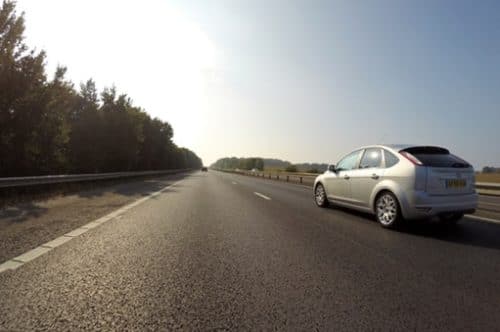
Driving schools in New Hampshire are required to cover a set of topics by the State DMV. While each school may have its own methods and techniques, each must make sure that all students learn the same material.
As you look for a driving school in Nashua, New Hampshire keep in mind some of these key curriculum points as you decide on a driving school in Nashua.
Basic Requirements
Driver education in New Hampshire is provided by public schools as well as many privately-owned driving schools. The State of New Hampshire requires driving instructors to be certified.
Each driving school must provide 30 hours of classroom instruction. In addition to class-time, each student must observe driving for 6 hours, and then undergo 10 hours of practice driving with the instructor. The classes generally take place over a period of 4-6 weeks in the afternoons and evenings.
Outside of the formal school setting, each new driver must complete 40 hours of supervised, logged driving with a responsible adult driver. That driver must be at least 25 years old, and may be apparent or guardian. 10 of those hours must be at night.
Around Nashua, the Buckle Up Driving Schoolprovides the full formal instruction, and their services are available for the supervised, logged driving.
Curriculum Basics
While the curriculum may vary in sequence from school to school, all will cover the same topics. A solid understanding of the rules of the road as well as an understanding of the vehicle you’re driving is the foundation of driver’s education. The rules focus on safety for you and other drivers, and cover issues including turn signals, speed limits, hazard signs, and road markings.
You also need to know what your car does. Learning the parts of the car—turn signals, brakes, light switches—which you will use every time you drive is important. You also need to know how to check your vehicle before driving is important to your ability to drive safely.
The Physical Side of Driving
Driving is a physical activity. Coordinating hands, feet, eyes, ears, head, and brain requires training in all activities—and in what to do when things take place.
Your eyes need to be visually checking your surroundings constantly. You’ll be tracking other vehicles as well as other potential problems—such as children playing in a yard two blocks away—to be ready to brake. Coming up to speed required coordination. Driving in traffic requires training.
Getting the feel of driving is important, especially with maneuvers like getting out of a skid on ice. Maintaining a safe speed and distance also requires coordination. Your driving school in the Nashua area will make sure you have plenty of practice in all these maneuvers
The Psychological Side of Driving
Driving is a human activity, and much depends on the human state of mind and abilities. The course focuses on what humans can do to drive well, and drive poorly. Human error causes most accidents.
You will learn to control your own behavior. You’ll focus on driving for the conditions—rain is different than clear weather; you should go slower.
Your emotions matter. Worry can get in the way of driving, as well as the anger which rises when you’re cut off in traffic. Road rage can be dangerous.
Being able to promote positive attitudes while driving, while reducing negative influences, including peer pressure, is part of safe driving. You’ll also learn what your responsibilities are if you’re involved in an accident, or witness one.
And you’ll learn to share the road with others. Learning how to keep safe spacing is a mental skill as much as a physical one.

Sharing the Road and Attention to Task
While you share the road, you’ll learn to be aware of the entire situation, not just the car in front of you. Reducing distractions, including conversations and changing radio stations, is part of safe driving. Communication with other drivers, by using turn signals and brakes, is also a skill covered by your driving school, here in Nashua and everywhere.
You also need to pay attention to the road ahead—two or three blocks when driving around Nashua, or well ahead when on the highway. Being situationally aware of all things—from the truck .5 mile ahead of you to the children playing in the yard in the next block—is a key skill which you’ll work on at the driving school.
Driving can also be impaired using drugs or alcohol, as well as fatigue, medication, and illness. These things can affect alertness and judgement.

Risk Management
You have to manage risks while driving, and that management depends on alertness and vision. Working on the skills of active attention—eyes moving all around, checking the mirrors, peeking over the shoulder—will make you a better driver.
Your instructor will work with you on these skills as you drive around Nashua. You’ll learn to anticipate foreseeable problems down the road, including observing the traffic light two blocks down turning yellow to seeing children playing in a yard.
Your driving school will work with you to provide you the best possible driver’s education. Buckle Up Driving School, training drivers in Nashua, New Hampshire is here to help you be the next safe driver on the road.

